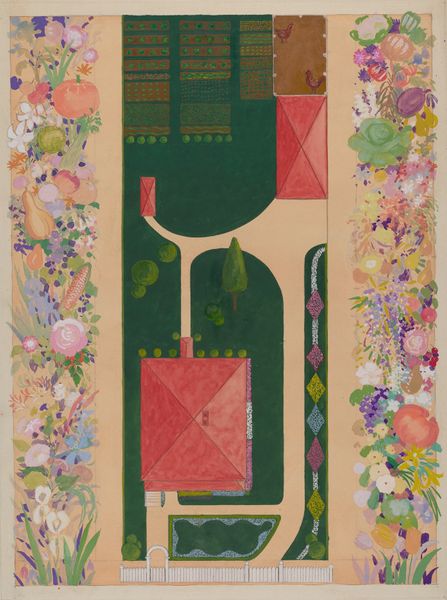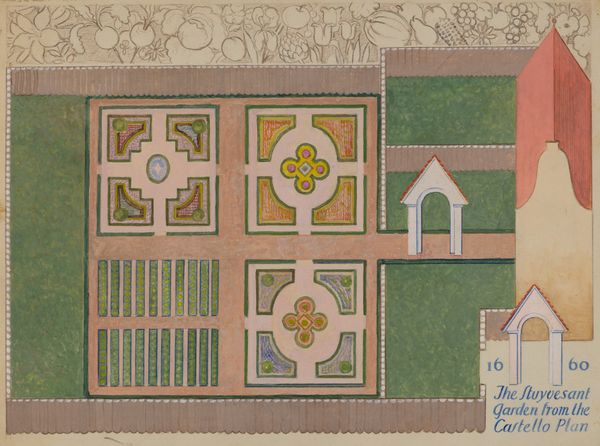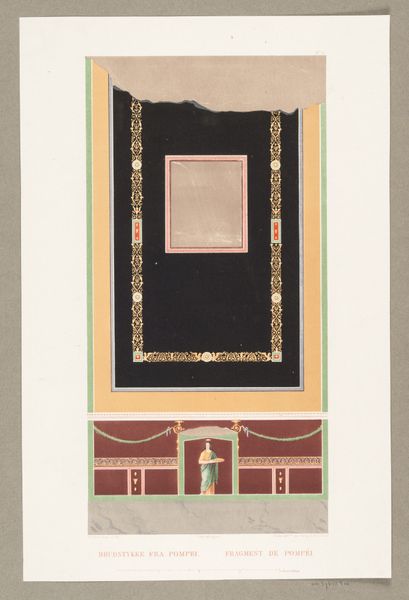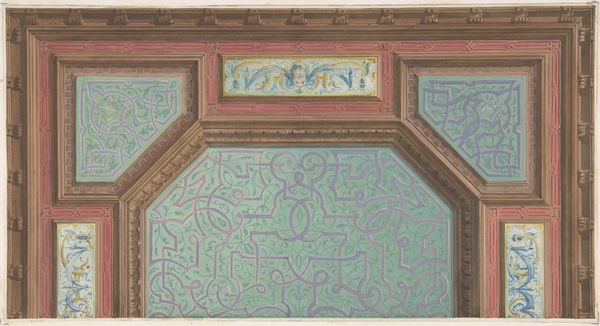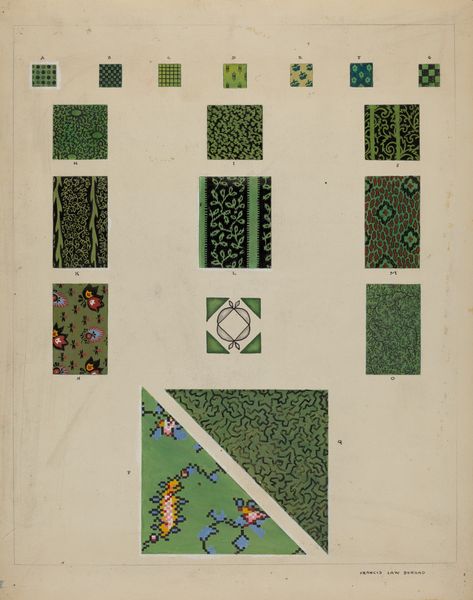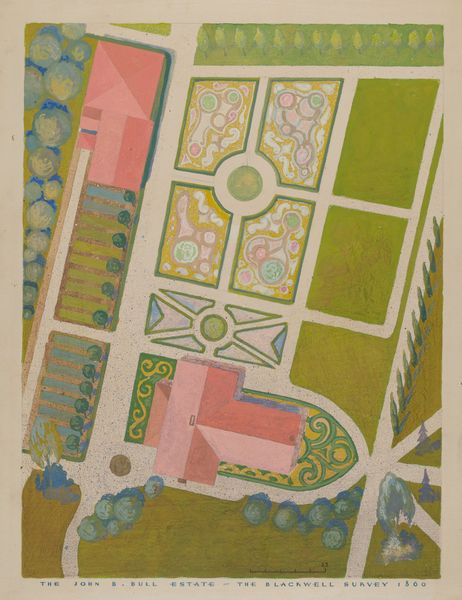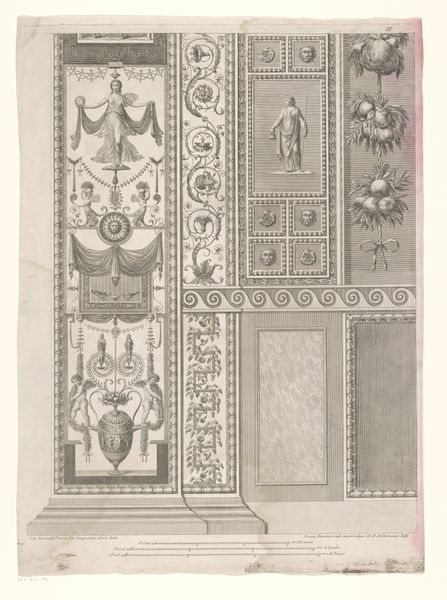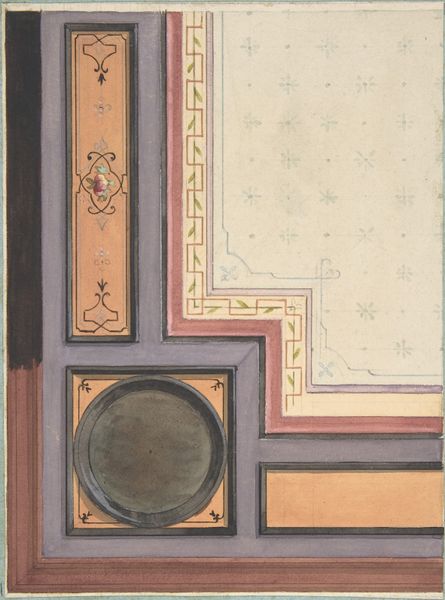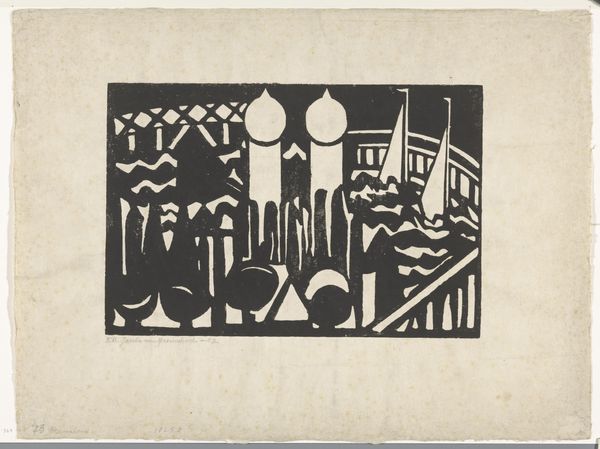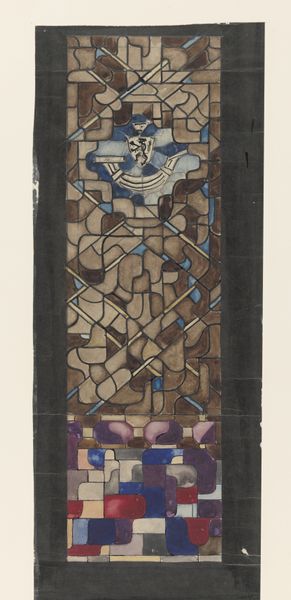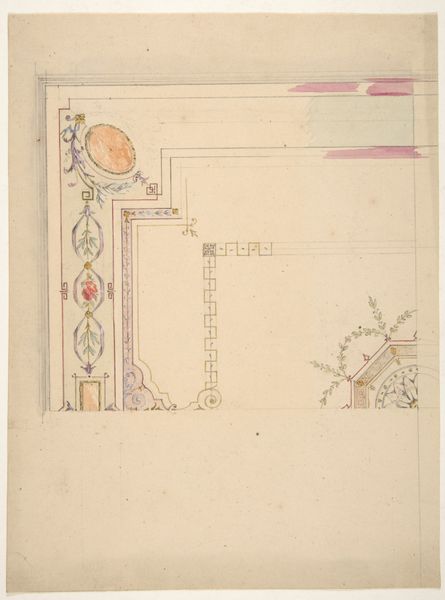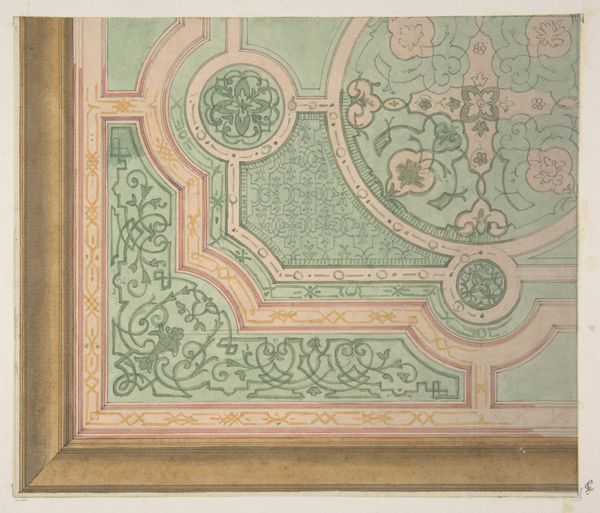
drawing, watercolor
#
drawing
#
landscape
#
watercolor
#
geometric
#
cityscape
Dimensions: overall: 50.6 x 38.2 cm (19 15/16 x 15 1/16 in.)
Copyright: National Gallery of Art: CC0 1.0
Curator: This piece presents an aerial view dominated by cool grays and precise geometries, yet it possesses an undeniable warmth, wouldn't you agree? Editor: Absolutely. What we’re seeing here is "Ward and Green Gardens," a watercolor and drawing made around 1936 by Meyer Goldbaum. The medium lends the whole a surprisingly comforting airiness, almost like an architect's daydreams instead of blueprints. It also reminds us of the 1930s artistic approaches in WPA that had an interest in city planning. Curator: Daydreams indeed! From an iconographic perspective, I am intrigued by its unusual mix of order and pastoral elements. The grid-like building arrangements coupled with idealized nature are almost utopian, like something out of a consciously constructed civilization. The symmetry speaks of power, yet it’s softened. Editor: Power carefully masked as gentility, perhaps. Look at the layout: It feels like a stage set, each garden meticulously plotted for public consumption. The statue in the upper right, standing solitary on a pedestal—what historical figure does it symbolize and what did they signify to Goldbaum in that decade? And were these real gardens that were idealized, or a complete fabrication? Curator: I see your point. These precise forms definitely reinforce a feeling of control, hinting at curated civic pride. But at the same time, don’t you feel a strong desire for an equilibrium? There's that symbolic garden in the upper corner with its different geometries, speaking volumes of ordered harmony amidst potential chaos. The colors enhance a sensation of vitality trying to come forth from within structured order. Editor: Vitality striving to peek through, yes, but even the gardens seem boxed in by the strict formality of their arrangements. The very notion of “gardens” in a cityscape represents an inherent political tension: Who has access? What does the display of nature say about societal values at this moment? What did public imagery signify during that specific era? Curator: I concur: the piece resonates with complexities – an era of urbanization clashing with idyllic escapism. The symbolism conveys more than pure aesthetics; these visuals speak to how we internalize balance, aspiration, and even constraint. Editor: Exactly! So much more than just pretty gardens then! Examining this intersection between city planning, visual imagery and public symbolism allows a layered view of both our aesthetic and socio-political consciousness.
Comments
No comments
Be the first to comment and join the conversation on the ultimate creative platform.
